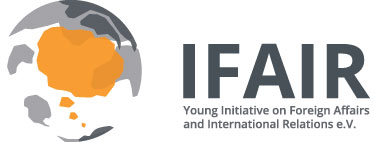
The Gendered Road to Paris 2020: How gender-inclusive climate finance can catalyse an EU-Caribbean SIDS triple-win

While structural inequalities make women particularly vulnerable to the impacts of climate change, there is a growing recognition of their agency in scaling adaptation, mitigation, and disaster risk management efforts. Discover how further engendering the delivery of EU climate finance in Caribbean SIDS can allow the bi-regional partnership to achieve the triple win of gender equality, mitigation, and resilience.
Introduction
Climate change is not gender-neutral. Differentiated levels of access to resources shape how women and men experience its impacts. This gendered impact is further complicated in the Caribbean, where the unique geographical and socioeconomic characteristics of Small Island Developing States (SIDS) leave the Region markedly vulnerable to climate change consequences. Simultaneously, there is a growing recognition that women’s unique knowledge enables them to play an agential role in scaling adaptation, mitigation, and disaster risk management efforts.[i] This opens the door to consider the critical link between gender equality and climate finance for inclusive sustainable development.
Such a reflection comes at a crucial time in the global response to climate change. Most countries have submitted their first Intended Nationally Determined Contributions (INDCs) and the European Union (EU)—the world’s largest contributor of climate finance—has pledged its commitment to contribute towards the goal of mobilising US $100 billion per year by 2020. [ii]
As both blocs prepare to turn their commitments under the Paris Agreement into action, the bi-regional partnership presents an ideal space to explore how gender-sensitive approaches can channel EU climate finance to achieve greater developmental impact in Caribbean SIDS and in so doing, unlock both regions’ individual and collective climate ambitions.
She who feels it, knows it
Image courtesy of D. Smillie/World Bank
Academic and policy discourse acknowledge that women are generally more vulnerable in the ways in which they experience, respond, and adapt to climate change.[iii] As Dinkelmann points out, “many traditional economies were founded on a gendered division of labour in which women typically had primary responsibility for certain areas of resource management.”[iv] Across Caribbean SIDS, a large proportion of women’s livelihoods depend on climate-sensitive sectors such as agriculture and tourism, 16%[v] and 55%,[vi] respectively. Women also tend to work more than men in the informal sector (55% vs. 45%)[vii], which is less resilient to climate-related shocks and does not provide access to formal social protection networks and safety nets.[viii]
In agriculture, women typically confront inequalities in access to productive assets such as land, credit and critical inputs (e.g. fertilisers, irrigation, technology, information and markets.[ix]) With climate impacts leading to decreased land suitability and reduced yields, the ability of women to engage in productive activities such as subsistence/smallholder farming becomes severely compromised, which affects their food security and nutrition.[x] As men are more likely to migrate in search of waged labour, women also remain with an increased workload.[xi]
Moreover, women are more likely than men to be affected by natural disasters provoked by climate change.[xii] They not only face greater exposure to diseases in post-disaster situations (given that they are often responsible for chores such as cooking and fetching water), but economic impacts translate into income reduction/loss, with consequences for women’s empowerment, welfare, and the welfare of their dependents. In Dominica, a post-disaster assessment estimated that 1.8 million working days were lost across the tourism, agriculture, and commerce sectors following the Category 5 Hurricane Maria.[xiii]
Finally, through cooking and other household tasks, women are primary energy users.[xiv] Still, structural gender inequalities preclude access to assets, education and training that could expand their role in clean energy, with many resorting to energy-inefficient biomass burning for cooking, lighting, and heating at the household and community levels. At the national level, access to the energy industry as workers/entrepreneurs is often limited, resulting in gender-blind energy project planning, financing, and implementation.
As stewards of natural and household resources, however, women are well-positioned to contribute to gender-responsive and gender-equitable programmes that build resilience.
Talking the talk and walking the walk
Recognising the particular vulnerability of SIDS, the EU established the Global Climate Change Alliance (GCCA) in 2007 to support SIDS’ endeavours to adapt to climate change. This partnership was renewed in 2014 to become the GCCA+, with the EU placing extra emphasis “on strengthening the strategically important issues of ecosystems-based adaptation, migration and gender equality.”[xv]
Under the GCCA, the project ‘Sustainable Coastal Zone Protection Through Mangrove Management in Guyana’ stands out as a best practice to demonstrate how the EU has actively integrated specific gender issues into its climate actions in the Region. With the dual objective of mitigating climate change and adapting to its effects, the project leveraged women’s capabilities to contribute to carbon sequestration through reforestation and forest preservation, as well as to adapt through strengthening natural sea defences and support for coastal zone biodiversity.
Specific gender equity criteria emphasised women’s increased representation in the Sea and River Defence Board and placements in Science, Engineering and Technology internships. Through learning-by-doing and valuing traditional knowledge, the project also promoted training for women to establish small women-led enterprises that would benefit from sustainable mangrove management. Lastly, the project supported the Government of Guyana in creating a National Gender Policy with complementary measures in line with the EU’s Gender Action Plan 2016-2020. Among the outcomes were: an increased percentage of women in decision-making processes and non-traditional activities with development co-benefits including women’s inclusion and economic empowerment.
Several lessons can be learnt: first among them, the importance of a holistic bottom-up and top-down gendered approach that not only addresses women’s ‘needs’ at the micro/local level but focuses on women’s leadership at the governance level. Second, the importance of considering the needs, interests and differential vulnerabilities of men and women in all aspects of project development, including the design, implementation, and monitoring and evaluation phases. Third, the fact that appreciating social dimensions of target communities and that building on women’s indigenous resilience experience can improve the mainstreaming of both adaptation and mitigation actions, tailoring them to individual countries’ specific context.
Applying this insight to the EU’s broader bilateral and regional climate-related finance flows in the Region[xvi] offers an opportunity to replicate and further scale these learnings. Over the period of 2014-2016, gender equality was an important and deliberate objective in 11% of the climate activities funded, but not the principal reason for undertaking the project.[xvii] Where present, gender equality was more often integrated into adaptation-related aid to agriculture, water, disaster risk reduction, and capacity-building and less so in economic infrastructure sectors. This leaves room to more explicitly consider women’s specific needs and contributions across both adaptation and mitigation, and at the same time, advance mitigation activities that spur gender inclusion in the energy and transport sectors.
A comparison of the sectors prioritised by gendered EU climate finance and the mitigation and adaptation priorities of Caribbean SIDS as expressed in their INDCs reveals scope to align available climate funds with complementary development priorities (Figure 1).[xviii] The majority of SIDS that prioritise adaptation in their INDCs identify water resources as a main priority area. Meanwhile, countries that emphasise mitigation actions propose interventions mainly in the energy sector.[xix] The energy and forestry sectors are identified as both mitigation and adaptation priorities. Three of 13 countries mention the linkage between gender and climate change.
Figure 1: Sectors prioritised by Caribbean SIDS in their INDCs
Source: Compiled by the authors based on an analysis of the INDC of 13 Caribbean SIDS submitted to the United Nations Framework Convention on Climate Change (UNFCCC)
The Way Forward
So, how can this high degree of complementarity create opportunities for gender-responsive climate funding allocations that enable women to become active agents of climate action? Two critical entry points are proposed.
The first entry point is to more closely consider the gendered implications of climate change in critical areas such as energy use and to unlock mitigation-related climate aid that increases women’s participation in all levels of the green economy. Complementary to large-scale energy infrastructure and industrial efficiency programmes, small-scale interventions (e.g. microfinance schemes) can strategically engage women to scale adoption as consumers of clean energy products and entrepreneurs in the delivery of energy services.
The second entry point is to further pursue joint mitigation and adaptation approaches—such as in the Guyana example—that decrease women’s risk and vulnerability to climate change. There are significant co-benefits between mitigation and adaptation, with effective mitigation efforts requiring a lesser subsequent emphasis on adaptation, owing to reduced climate impacts. Contributing to cross-sectoral Nationally Appropriate Mitigation Actions through synergetic activities in the agriculture, forestry and other land use sectors can give women the tools to sustain the pursuit of joint activities in the future. For example, capacity-building on sustainable farming practices such as agroforestry not only allows women to improve food production, food security and income diversification (thereby increasing the household’s overall adaptive capacities against climate shocks); tree planting also delivers significant greenhouse gas reductions.
Image courtesy of Isak55/Shutterstock
Effectiveness, effectiveness, effectiveness
As women face changing responsibilities and employment opportunities brought on by climate change, both regions have a responsibility to foster inclusive climate action; this is not least because climate change impacts know no boundaries. Caribbean SIDS as recipients should be prepared to articulate policy priorities that recognise gender responsiveness as a pathway to sustainable development through a country-driven approach. As a donor, the EU should further promote direct and aligned responses that address women’s increased burden brought on by climatic shocks, and also harness their potential to strengthen their adaptive and mitigative capacities.
In a dimension of this symbiosis that is not always considered, lessons learnt from gender and climate finance in Caribbean SIDS also add an important perspective to the EU’s internal climate agenda. For example, gender gaps in the labour market, as well as women’s disadvantaged access to highly-skilled technical and scientific jobs, finds mutual computability in both regional contexts.[xx] Accordingly, financing opportunities that encourage greater female participation in Science, Technology, Engineering, and Math (STEM) fields can increase their knowledge of- and access to- appropriate sustainable energy technologies, as well as provide jobs and advancement opportunities in the clean tech sector.
Given the needs in this area, regardless of the transatlantic distance, gendered climate finance can easily represent an EU-Caribbean SIDS triple win: gender equality, mitigation, and resilience.
References
[i] Whyte, K. (2014) Indigenous Women, Climate Change Impacts, and Collective Action. Hypatia, 29 (3). http://library.pcw.gov.ph/sites/default/files/indigenous%20women,%20climate%20change%20impacts.pdf (accessed 10 July 2018).
[ii] United Nations Framework Convention on Climate Change (UNFCCC). (2016) Roadmap to US $100 Billion.http://www4.unfccc.int/Submissions/Lists/OSPSubmissionUpload/261_295_131233554162587561-Roadm ap %20to%20the%20US$100bn%20(UNFCCC).pdf (accessed 9 August 2018).
[iii] Demetriades, J. and Esplen, E. (2008) The Gender Dimensions of Poverty and Climate Change Adaptation. IDS Bulletin, 39 (4). https://onlinelibrary.wiley.com/doi/abs/10.1111/j.1759-5436.2008.tb00473.x (accessed 10 July 2018).
[iv] Dankelmann, I. (2002) Climate Change: Learning from Gender Analysis and Women’s Experiences of Organising for Sustainable Development. Gender and Development, 10 (2): 21-29. https://www.tandfonline.com/doi/abs/10.1080/13552070215899 (accessed 10 July 2018).
[v] Food and Agriculture Organisation (FAO). (2011) State of Food and Agriculture. Women and Agriculture: Closing the Gender Gap for Development. Rome. http://www.fao.org/publications/sofa/2010-11/en/ (accessed 02 April 2018).
[vi] World Tourism Organization (UNWTO) and the United Nations Entity for Gender Equality and the Employment of Women (UN Women). (2011) Global Report on Women in Tourism 2010. Madrid, 18. http://cf.cdn.unwto.org/sites/all/files/pdf/global_report_on_women_in_tourism_2010.pdf (accessed 02 April 2018).
[vii] United Nations Entity for Gender Equality and the Employment of Women (UN Women). (2015) Progress of the World’s Women 2015-2016. Madrid, 71. http://progress.unwomen.org/en/2015/pdf/ UNW_progressreport.pdf (accessed 02 April 2018).
[viii] Nelson V. et. al. (2002) Uncertain Predictions, Invisible Impacts, and the Need to Mainstream Gender in Climate Change Adaptations. Gender and Development, 10 (2): 51-59. https://www.tandfonline.com/action/showCitFormats?doi=10.1080%2F13552070215911 (accessed 10 July 2018).
[ix] Brown, L. et al. (1995) Generating Food Security in the Year 2020: Women as Producers, Gatekeepers and Shock Absorbers. International Food Policy Research Institute 2020 Brief, 17. https://pdfs.semanticscholar.org/01f1/9be2a78245ec09e5ccde6c7c36d96187a929.pdf (accessed 10 July 2018).
[x] Denton, F., Climate Change Vulnerability, Impacts, and Adaptation: Why Does Gender Matter? Gender and Development, 10 (2). https://www.jstor.org/stable/4030569?seq=1#page_scan_tab_contents (accessed 15 June 2018).
[xi] Nelson et. al. (2002).
[xii] Williams. M. (2016) Gender and Climate Change Financing: Coming Out of the Margin. London: Routledge,534.
[xiii] Twinning, W. (2017). Resilience, Sustainability, and Inclusive Growth for Tourism in the Caribbean. World Bank. https://worldbank.org/psd/resilience-sustainability-and-inclusive-growth-tourism-caribbean (accessed 02 April 2018).
[xiv] Huyer, S. (2016) Gender Equality in National Climate Action: Planning for Gender-Responsive Nationally Determined Contributions. United Nations Development Programme (UNDP). http://www.undp.org/content/undp/en/home/librarypage/womens-empowerment/gender-equality-in-national-climate-action–planning-for-gender-.html (accessed 15 June 2018).
[xv] European Union. (2012) Paving the Way for Climate Compatible Development: Experiences from the Global Climate Change Alliance. http://www.gcca.eu/sites/default/files/GCCA/gcca_brochure_2012_eng_pdf_lo_0.pdf (accessed 15 June 2018).
[xvi] Compiled by authors based on an analysis of gender equality policy markers in data from the Organisation for Economic Cooperation and Development (OECD) Development Assistance Committee’s Creditor Reporting System (CRS).
[xvii] Ibid.
[xviii] Compiled by the authors based on an analysis of the INDCs of 13 Caribbean SIDS submitted to the United Nations Framework Convention on Climate Change (UNFCCC).
[xix] Compiled by authors based on an analysis of gender equality policy markers in data from the Organisation for Economic Cooperation and Development (OECD) Development Assistance Committee’s Creditor Reporting System (CRS).
[xx] Among the EU countries, women’s wages are 16.2% lower than men’s wages in equal positions. In positions requiring technical and scientific skills, however, the gender pay gaps are as high as 31.3% in Germany or 28.9% in Italy (EUROSTAT 2016).

Lena Schubmann (Germany) and Nayaatha Taitt (Trinidad)
Lena Schubmann holds a Master ́s degree in Latin American Studies from the University of Cambridge and Bachelor’s degrees in International Relations from King ́s College London and in Business Administration from the University of Applied Sciences in Göttingen. Her research is primarily interested in social protection networks in Latin America. As part of her Master ́s degree, she has conducted research on social protection, indigeneity and trade unionism in Andean Bolivia. She is a Carlo-Schmid Fellow at the World Food Programme in Guatemala, where she specializes in resilience and climate change adaptation activities. Nayaatha Taitt currently works at the Inter-American Development Bank on a regional programme to scale up green finance across Latin America and the Caribbean. She holds a Master’s in International Affairs from the Graduate Institute of International and Development Studies in Geneva, Switzerland as well as a Postgraduate Diploma in International Relations and a BA in French and Spanish from the University of the West Indies. Her professional interests lie in the sustainable development challenges attendant to Small Island Developing States, having gained an appreciation for their unique vulnerabilities whilst working on SIDS issues both at the regional and international levels. Nayaatha has held prior positions at the United Nations Development Programme, the Association of Caribbean States, and the International Centre for Trade and Sustainable Development.
